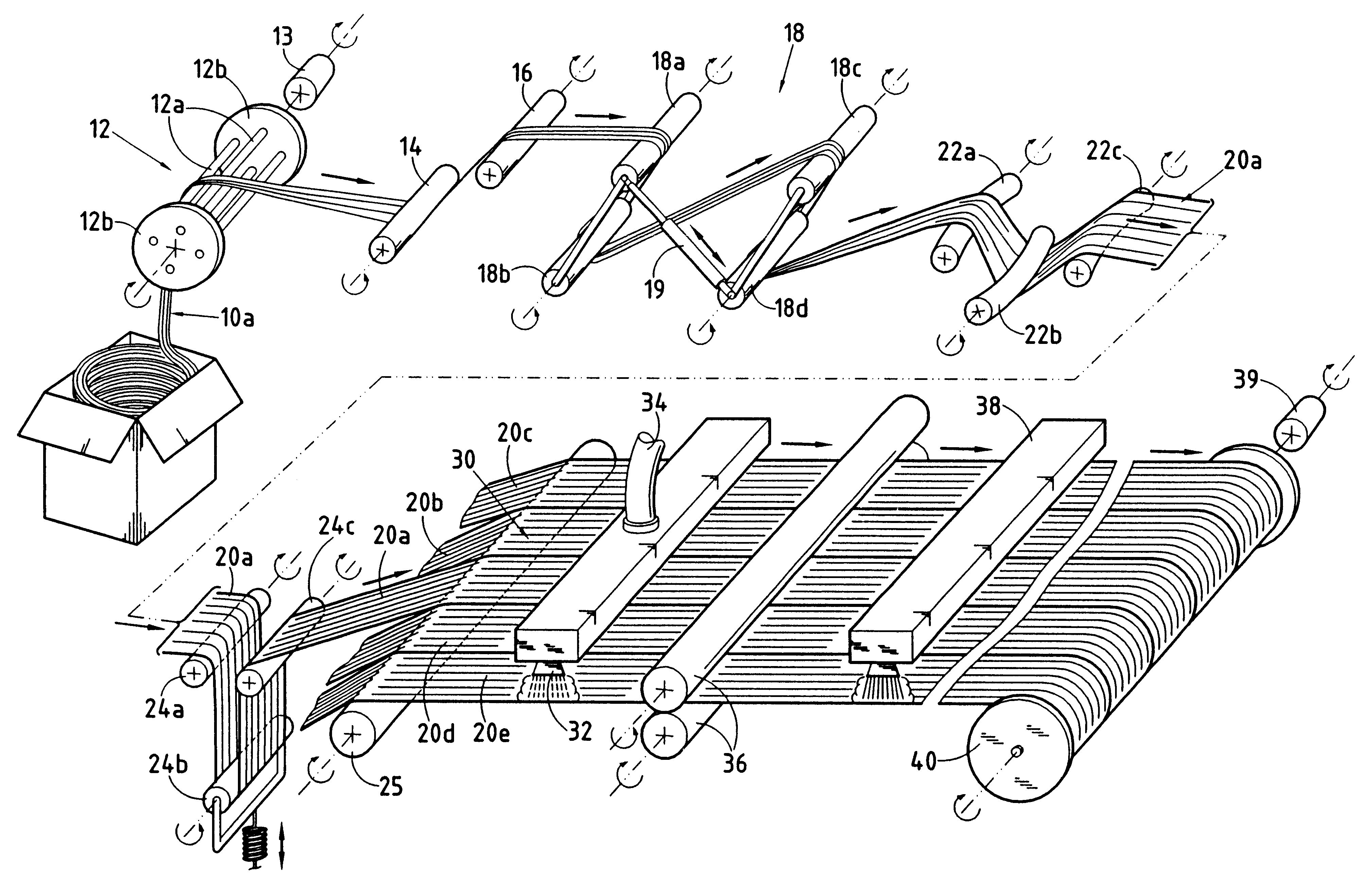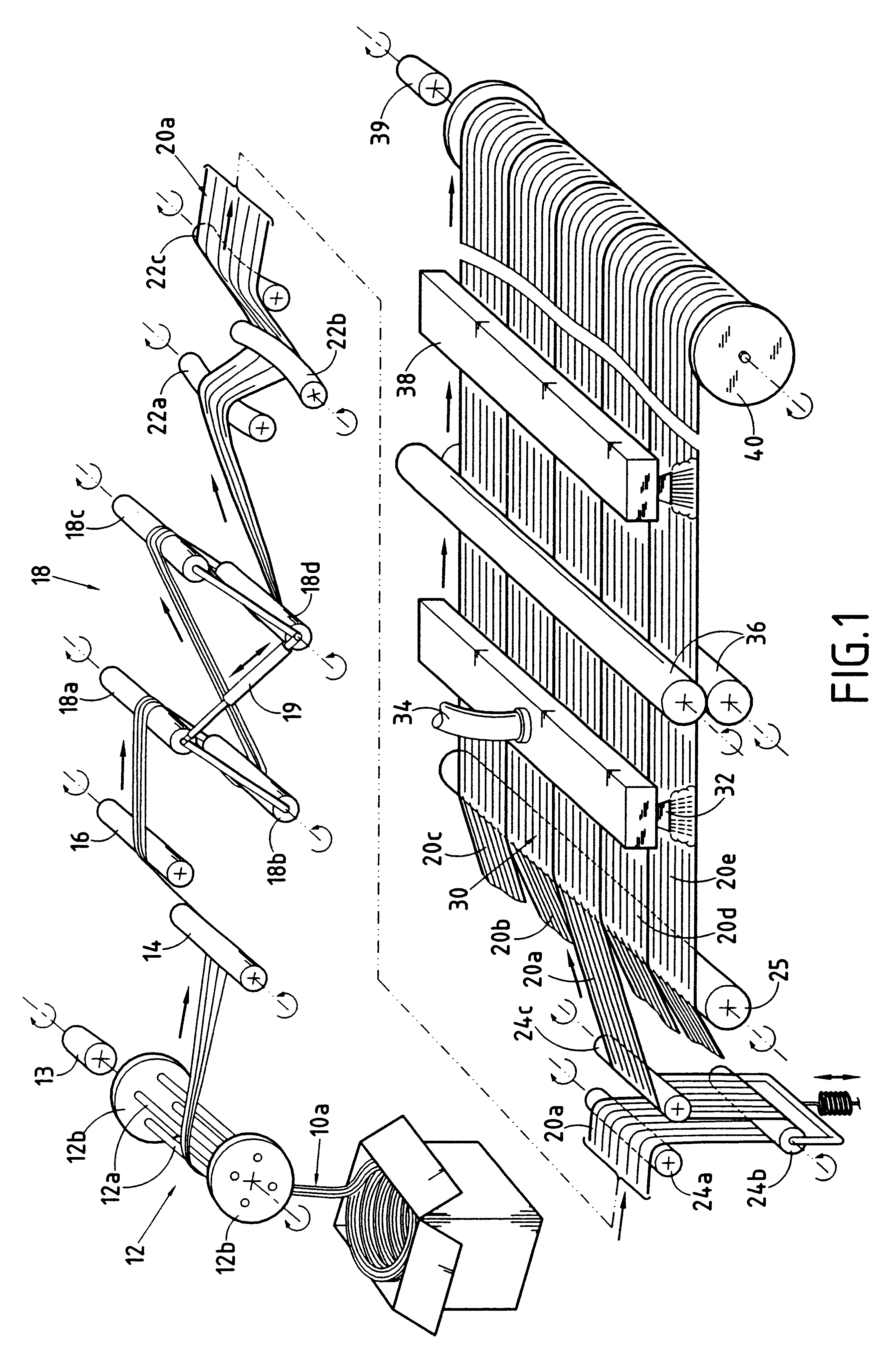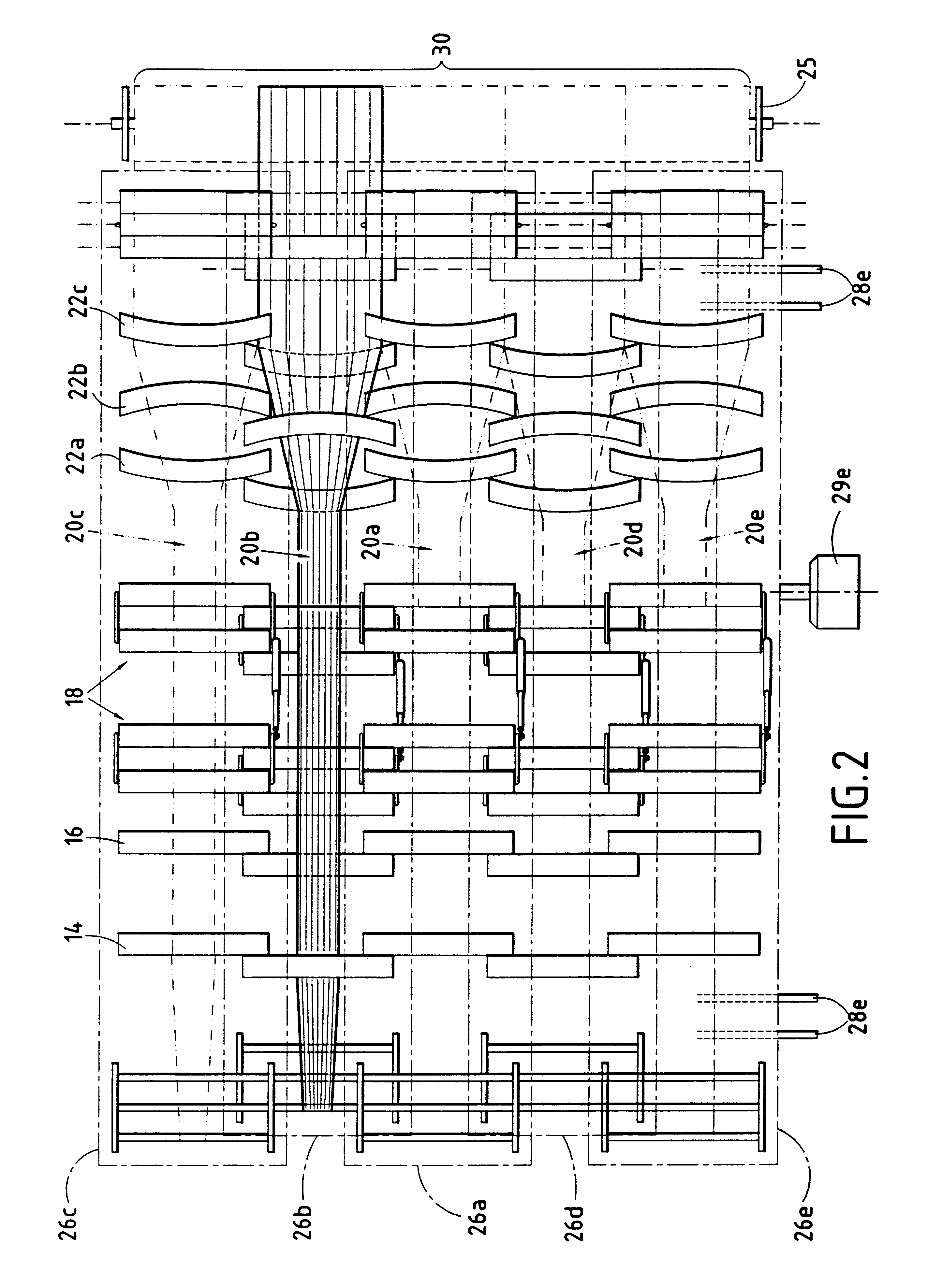Method and machine for producing multiaxial fibrous webs
a multi-axial, fiber-based technology, applied in the direction of knitting machines, ornamental textile articles, flat warp knitting machines, etc., can solve the problems of reducing the mechanical properties of composite materials prepared from such multi-axial sheets, reducing the cost of making such sheets, and limiting the use of that method
- Summary
- Abstract
- Description
- Claims
- Application Information
AI Technical Summary
Benefits of technology
Problems solved by technology
Method used
Image
Examples
example 1
A tow of high-strength carbon fibers constituted by 480,000 continuous filaments (480 K) weighing 30,000 tex, having breaking strength in traction of 3600 MPa and a modulus of 250 GPa was spread over a width of 150 mm by means of an installation similar to that of FIG. 1. The spread tow was subjected to a stretching and bursting operation during which the continuous filaments were transformed into discontinuous filaments, the majority of which were of a length lying in the range 25 mm to 170 mm. During bursting, the spread tow was subjected to stretching by a factor of 2 and its weight (per unit area) was reduced, giving a unidirectional sheet having a width of 150 mm and a weight of 110 g / m.sup.2.
The sheet was fixed by disorienting the fibers slightly, the great majority of them remaining parallel to the sheet direction. The disorientation was performed by subjecting the sheet situated over a metal plate to a jet of water under a pressure of at least 100 bars.
The resulting sheet wa...
example 2
The two-axis sheet of Example 1 was fixed not by needling, but by stitching using a zigzag knit stitch parallel to the longitudinal direction. The knitting thread was a 150 dtex cotton thread having two strands. A two-axis sheet was obtained that was quite capable of being handled.
example 3
The tow of Example 1 as spread and fixed by a jet of water after stretching and bursting was enlarged by being passed over curved bars to increase its width from 80 mm to 120 mm. Two similar unidirectional sheets obtained in this way were laid at +45.degree. and -45.degree., as in Example 1, but with 50% overlap between successively-laid segments of sheet. The two-axis sheet was fixed by needling, as in Example 1. A two-axis sheet was obtained weighing 530 g / m.sup.2 and that was quite capable of being handled.
PUM
| Property | Measurement | Unit |
|---|---|---|
| width | aaaaa | aaaaa |
| width | aaaaa | aaaaa |
| angles | aaaaa | aaaaa |
Abstract
Description
Claims
Application Information
 Login to View More
Login to View More - R&D
- Intellectual Property
- Life Sciences
- Materials
- Tech Scout
- Unparalleled Data Quality
- Higher Quality Content
- 60% Fewer Hallucinations
Browse by: Latest US Patents, China's latest patents, Technical Efficacy Thesaurus, Application Domain, Technology Topic, Popular Technical Reports.
© 2025 PatSnap. All rights reserved.Legal|Privacy policy|Modern Slavery Act Transparency Statement|Sitemap|About US| Contact US: help@patsnap.com



